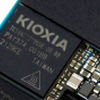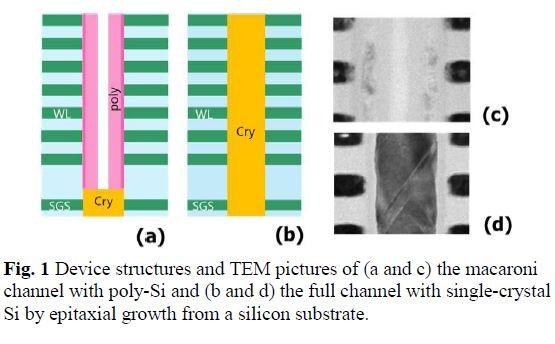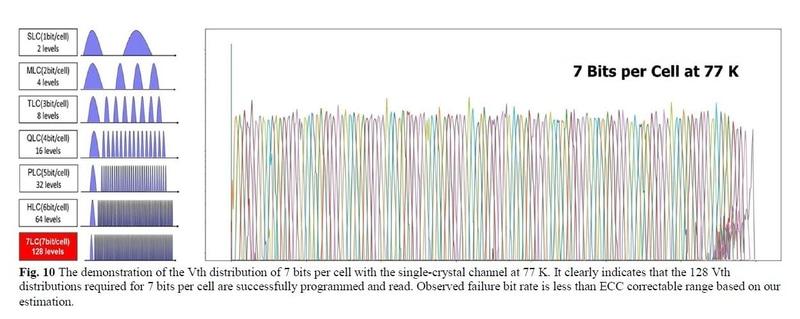Yeah, TLC 3-bits per cell, PLC at 4-bits, but Kioxia is thinking ahead, at7-bits per cell, to really boost volume sotage for NAND SSDS.
Kioxia, a prominent vendor, demonstrated how multi-value storage technology improved the number of bits that can be held in one memory cell . Kioxia has created an ultra-multi-valued storage technique capable of storing up to 7 bits of data in a single 3D NAND flash cell. During last year's International Memory Workshop, the business presented a multi-valued storage solution that can store up to 6 bits in a single 3D NAND flash cell (IMW 2021). The discoveries reported this time are the result of further advancements in this research.
Similar to the 6bit/cell technology revealed the previous year, the ambient temperature was not room temperature but 77K, which is an environment of exceptionally low temperature. This is done to decrease data read noise. In addition, the material of the channel was changed to epitaxially grown single-crystal silicon. The electrical resistance is lower than that of routinely utilized polycrystalline silicon. The cell transistor's subthreshold properties have been enhanced, and the leakage current has been diminished. In the prototype cell, it was confirmed that these techniques decreased the threshold voltage variance during the write and read operations, allowing the threshold voltage to be written and read in 128 steps equivalent to 7 bits.
While even bigger SSDs likely are be pricey, an overly sophisticated controller could render ultra-high-capacity drives prohibitively expensive and nullify their benefits. Western Digital predicts that even after 2025, PLC 3D NAND (5 bpc) will have little use. Kioxia now proves the physical possibility of storing seven bits per cell and even discusses the eventual storage of eight bits per cell.
Kioxia Talks 7-bit per cell NAND



